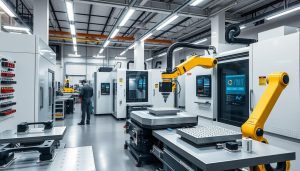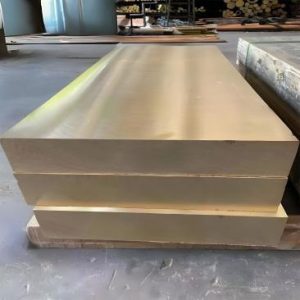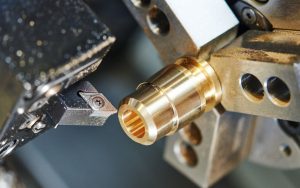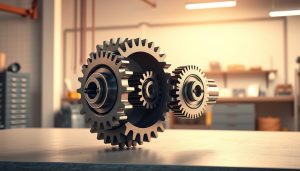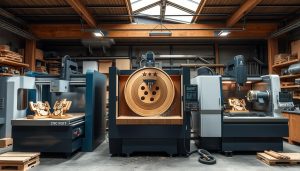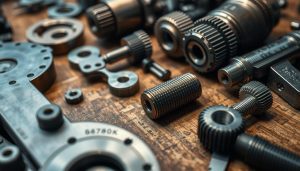In today’s world, die casting molds are key in making the products we all use. They help create everything from car parts to kitchen appliances. These molds are crucial in the die casting process, turning liquid metal into detailed parts. But what makes a die casting mold so important, and how does it affect the final product? Let’s find out.
What is a Die Casting Mold?
A die casting mold is at the center of the die casting process. It’s a key part that shapes the final product. These molds can handle high pressure and temperatures, making precise cavities for molten metal. Low-pressure die casting is popular for its quality parts with less porosity and better strength.
Definition and Role in the Die Casting Process
A die casting mold is a special tool that looks like the part you want to make. When molten metal is poured into it, it takes the mold’s shape. This makes the final product. The mold’s quality affects the part’s accuracy and finish.
Key Components: Ejector and Stationary Parts
A die casting mold has two main parts: the ejector die and the stationary die. The ejector die pushes the solid part out, while the stationary die stays still. These parts work together to remove the part. Their precise design is key for making quality die casting parts.
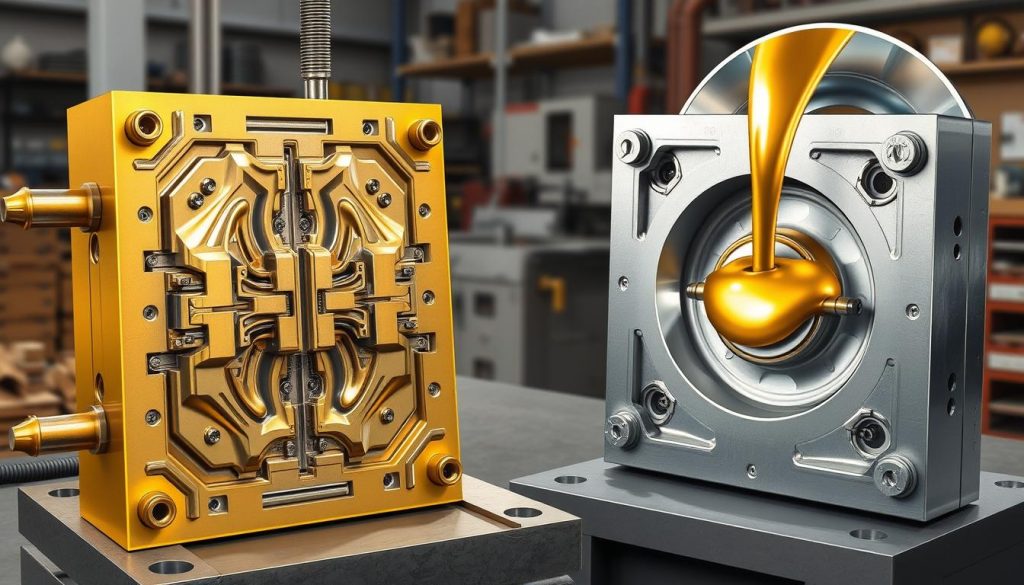
Knowing about die casting molds helps manufacturers see their importance. These tools are vital for making high-quality, precise parts.
Types of Die Casting Molds
Die casting molds come in different designs for various needs. There are single-cavity and multi-cavity molds, each with its own purpose.
Single-Cavity and Multi-Cavity Molds
A single-cavity mold makes one part at a time. It’s great for small batches or prototypes. Multi-cavity molds, however, can make many parts at once. This boosts production and efficiency.
| Feature | Single-Cavity Mold | Multi-Cavity Mold |
|---|---|---|
| Output | One part per cycle | Multiple parts per cycle |
| Ideal for | Low-volume, prototypes | High-volume production |
| Design complexity | Simpler | More complex |
| Cost | Lower | Higher |
Hot Chamber vs. Cold Chamber Molds
Die casting molds also differ in how they handle molten metal. They can be hot chamber or cold chamber. Hot chamber molds have the furnace built into the machine. Cold chamber molds need a separate furnace for melting the metal before it’s injected into the mold.
Choosing between hot chamber and cold chamber molds depends on the metal, production volume, and part complexity. Hot chamber molds work best with low-melting-point metals like zinc. Cold chamber molds are more versatile, working with a variety of metals.
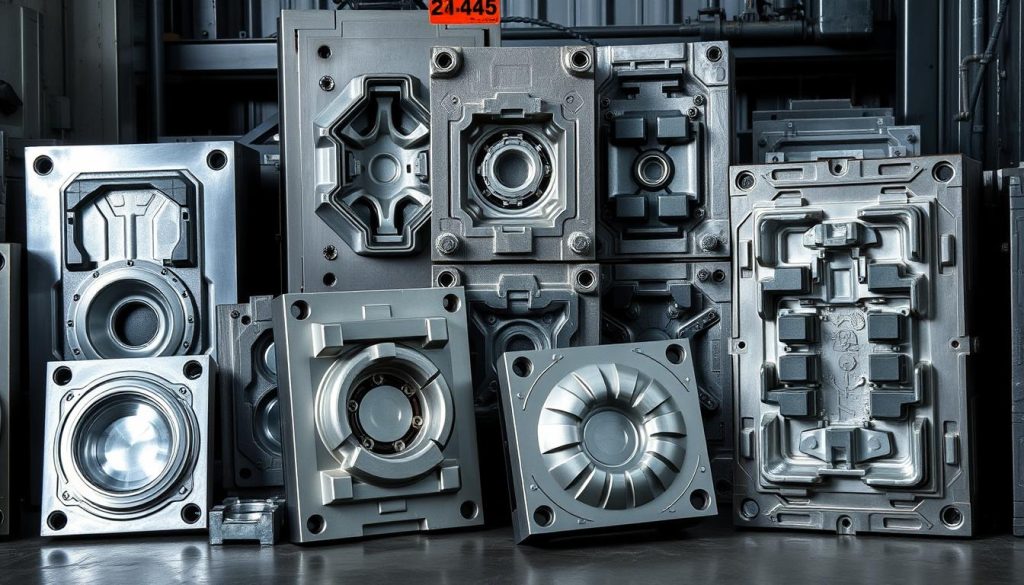
Steps in Designing a Die Casting Mold
Creating a top-notch die casting mold is a detailed process. It starts with planning and goes through assembly and testing. Each step is vital for the mold’s success.
Initial Design and Specification
The first step is to plan the mold’s design and specs. Designers look at the product’s size, shape, and material needs. They also think about the production volume, the die casting machine, and any special needs.
Tooling and Mold Base Preparation
Next, the mold base and tooling are prepared. The mold base is the mold’s foundation. Designers pick materials and parts for the mold, like the mold design, tooling, and mold base.
Mold Assembly and Testing
After making the mold parts, it’s time to put them together and test. The parts are carefully fitted and checked for fit and strength. Then, the mold is tested for quality, like how well it holds its shape and finish.
By following these steps, mold designers make molds that work well and efficiently. This ensures the die casting process runs smoothly.
| Step | Description |
|---|---|
| Initial Design and Specification | Analyze product requirements, consider production volume, and select appropriate die casting machine and materials. |
| Tooling and Mold Base Preparation | Design mold base, select suitable materials and components for mold parts like mold design, tooling, and mold base. |
| Mold Assembly and Testing | Carefully assemble mold parts, ensure alignment and structural integrity, and conduct rigorous testing to evaluate performance. |
Benefits of High-Quality Die Casting Molds
High-quality die casting molds bring many benefits to manufacturing companies. They improve production efficiency, offer dimensional accuracy, and allow for complex geometries.
Faster Production Cycles
Well-made die casting molds make production faster. This means more products, quicker delivery, and better meeting customer needs.
Precision and Dimensional Accuracy
Top-notch die casting molds ensure parts are precise and consistent. This is key for parts needing tight tolerances, ensuring they meet high quality standards.
Versatile Shapes and Thinner Walls
Modern mold designs let makers create complex shapes and thin walls. This opens up new possibilities for product design and function.
| Benefit | Impact |
|---|---|
| Faster Production Cycles | Increased output, reduced lead times, improved responsiveness |
| Precision and Dimensional Accuracy | Consistent quality and tight tolerances for critical applications |
| Versatile Shapes and Thinner Walls | Design flexibility and opportunities for product innovation |
Investing in top-notch die casting molds gives manufacturers a competitive edge. It boosts production efficiency and ensures products meet high dimensional accuracy and complex geometry standards.
“The right die casting mold can revolutionize a manufacturer’s production capabilities, leading to enhanced efficiency, quality, and innovation.”
Shixinproto’s Die Casting Mold Services
At Shixinproto, we’re proud of our die casting expertise. We offer a wide range of services to meet our clients’ needs. This ensures they get top-notch solutions for their projects.
Custom Mold Design and Manufacturing
We use advanced engineering to create custom molds. Our team works with clients to understand their needs. We then design innovative molds that boost productivity and save costs.
Comprehensive Solutions for Die Casting Needs
Need a simple mold or a complex system? Shixinproto can handle it. Our complete die casting solutions cover everything from design to production. This guarantees high-quality results that match your exact requirements.
